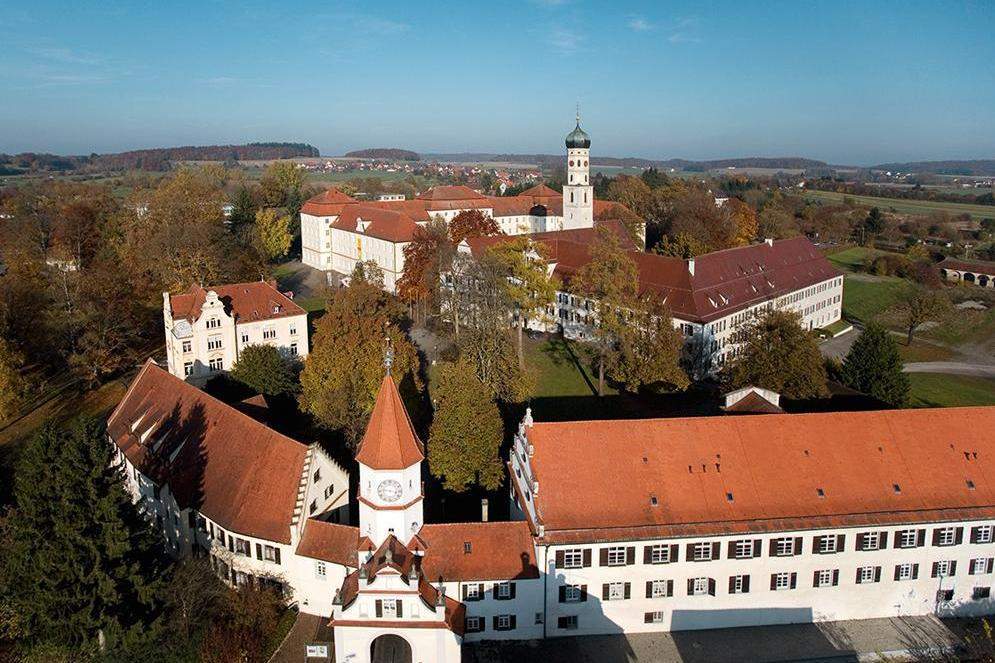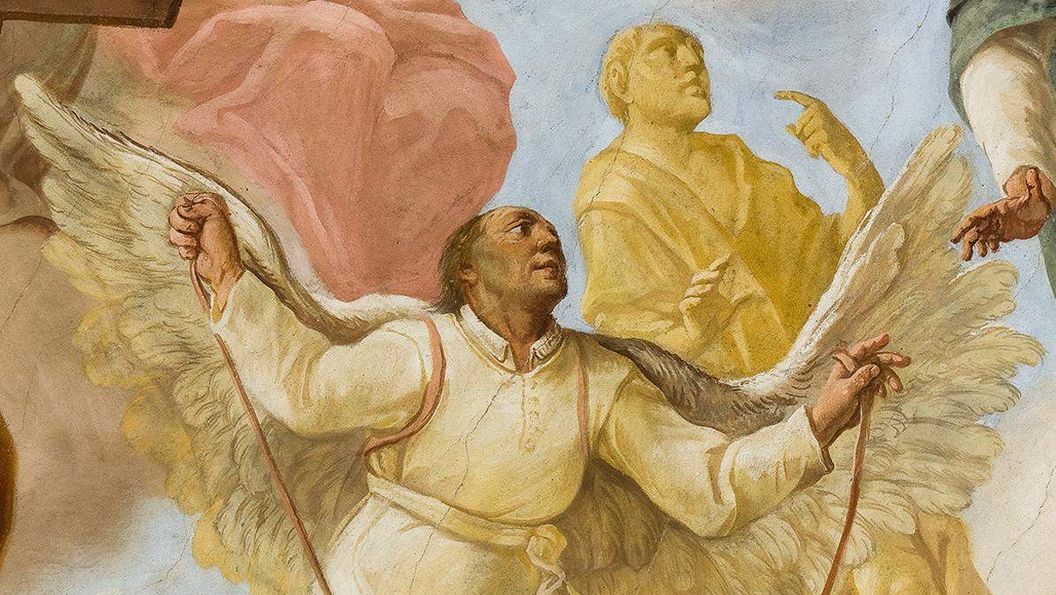Spectacular interiors
Today, the monastery unites architecture and works of art from the late Romanesque era to the Rococo. The highlight of Zimmermann’s design is the library in the central part of the three wing complex. Flooded with natural light, the ornately decorated room is one of the most significant architectural examples of southern German Rococo. With its impressive artwork, the library is regarded as the most spectacular element of the monastery – and one of the main attractions on the Upper Swabian Baroque Route: Spanning two floors, the bookcases house a collection that was, in its day, one of the most extensive in German-speaking Europe.
The ceiling fresco, completed by Franz Georg Hermann in 1757, depicts divine wisdom on a grand and glorious scale, covering the Apocalypse, science, art and technology.
The best-known image from the fresco shows the enterprising canon Caspar Mohr. In the 17th century, he constructed a feathered flying machine, almost becoming the aviation pioneer of Upper Swabia – generations before the Zeppelin airship was invented.




